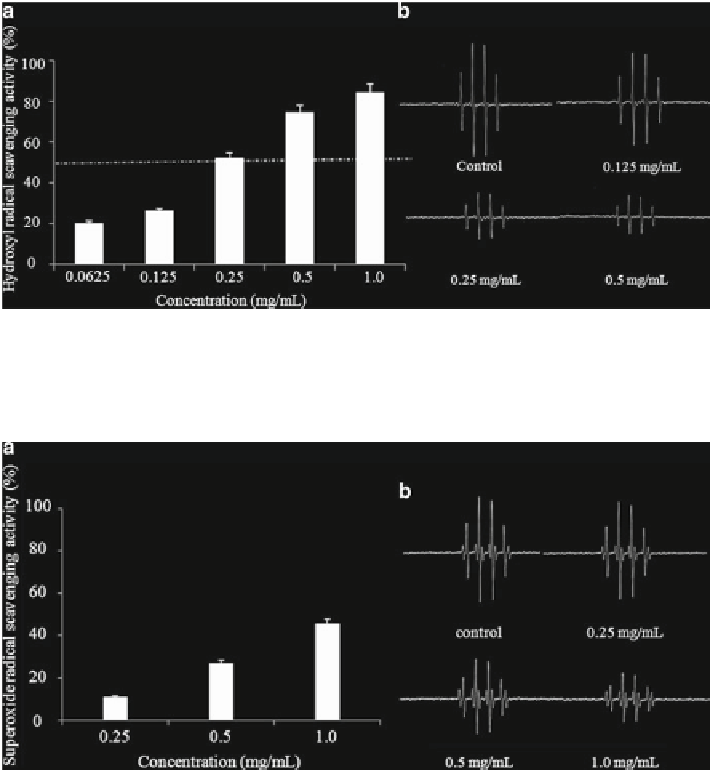Biology Reference
In-Depth Information
Fig. 17.2
Hydroxyl radical scavenging activity (%) (
a
) and ESR spectra (
b
) according to the tau-
rine treatment at various concentrations (0.0625-1 mg/mL). Each bar represents the mean ± SEM
of three independent experiments. The dashed horizontal line indicates the value at the concentra-
tion inhibiting 50% of free radical generation (IC
50
)
Fig. 17.3
Superoxide radical scavenging activity (%) (
a
) and ESR spectra (
b
) according to the
taurine treatment at various concentrations (0.0625-1 mg/mL). Each bar represents the mean ± SEM
of three independent experiments
17.3.2
DNA Protective Activity
The free radical scavenging effect of taurine was studied on plasmid DNA damage
(Fig.
17.5
). The taurine at the concentration of 0.5 mg/mL and 1.0 mg/mL showed
significant reduction in the formation of nicked DNA and increased native form of
DNA (supercoiled DNA). These results indicate that the taurine is a DNA protector,
which provides antioxidant activity to prevent DNA damage. Therefore, the pres-
ence of taurine may contribute to the protective effect against free radical-induced
DNA damage.

Search WWH ::

Custom Search